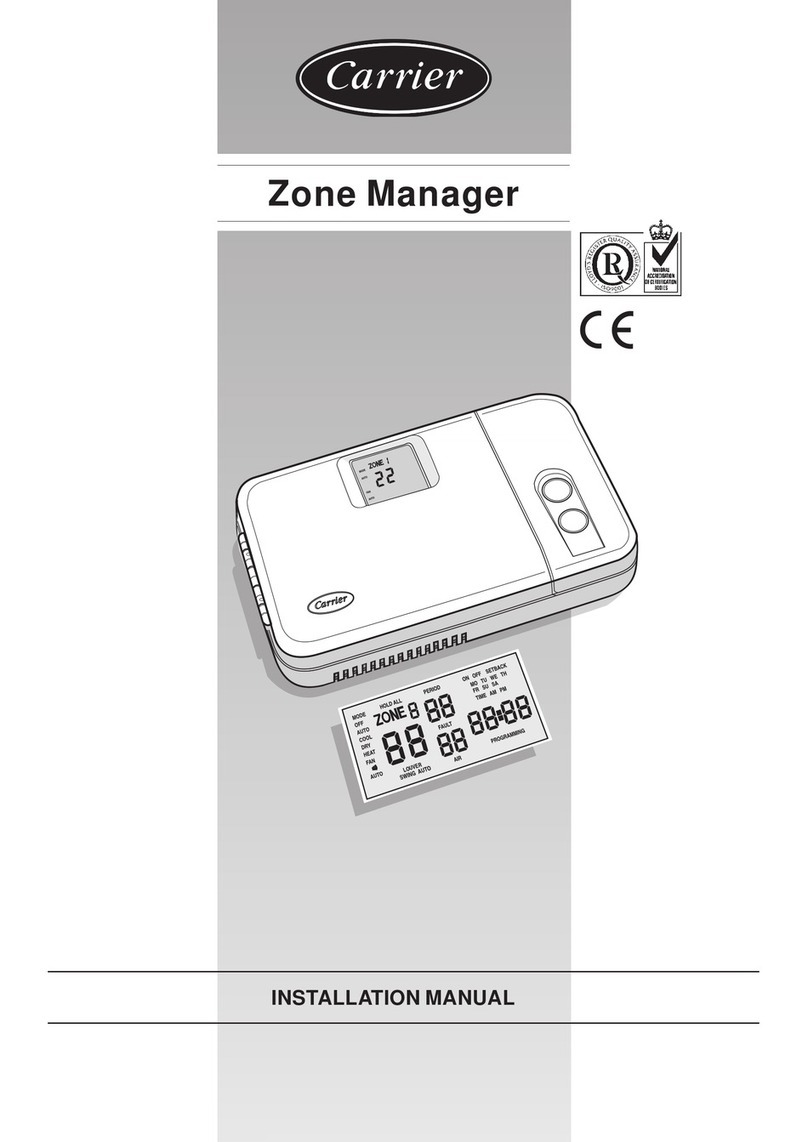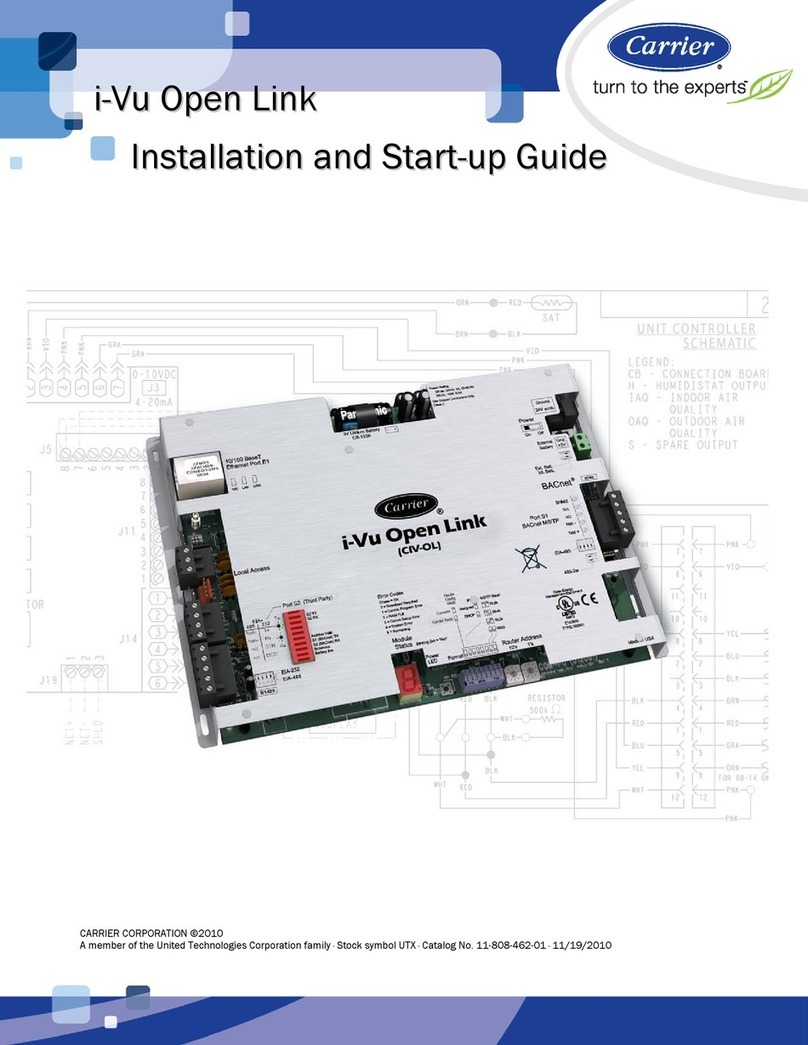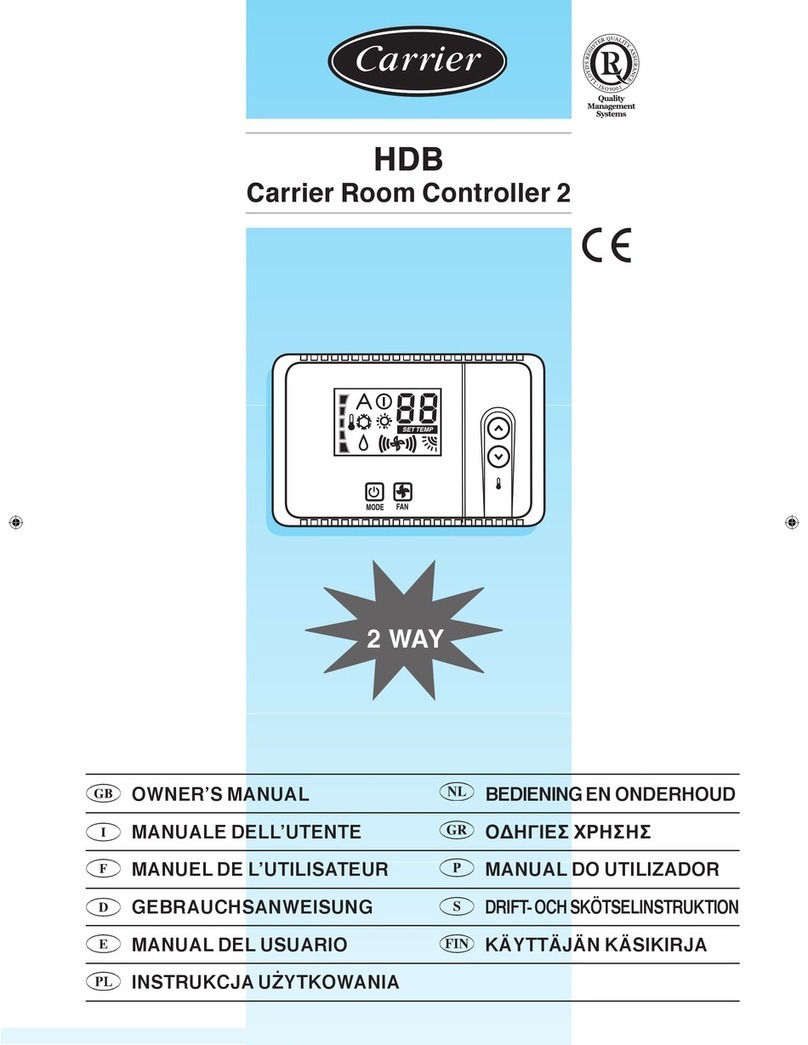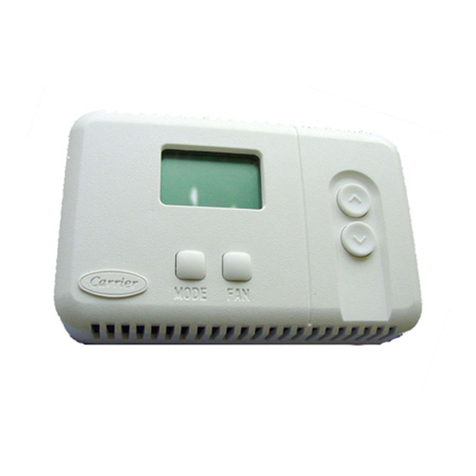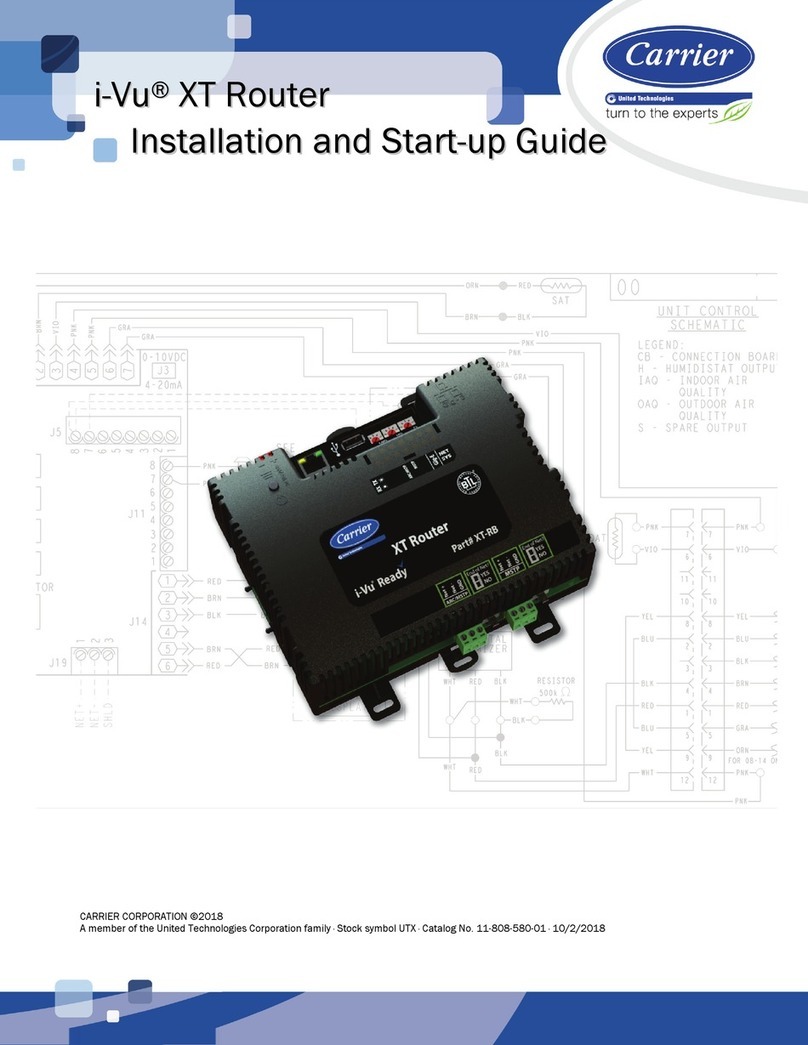HUMIDITRAC™HUMIDIFIER CONTROL
SAFETY AND INSTALLATION INSTRUCTIONS
READ COMPLETE INSTALLATION INSTRUCTIONS AND TEMPLATE BEFORE STARTING.
Attention Installer: WARNING This product must be installed by a qualified heating and air conditioning contractor.
Failure to do so could result in serious injury from electrical shock.
WARNING
1. 120 volts may cause serious
injury from electrical shock.
Disconnect electrical power to
the furnace before starting
installation.
2. Sharp edges may cause serious
injury from cuts. Use care when
cutting plenum openings and
handling ductwork.
CAUTION
1. Do not set humidity higher than recommended. Condensation damage may result.
2. Do not set humidity up to recommended levels if there is condensation on the inside of windows of any
unheated living space. Condensation damage may result.
3. Do not mount Humidifier Control on supply plenum or duct. The unit will not withstand supply temperatures.
4. When installing Humidifier Control on downflow furnaces, ensure blower continues to run after a heat call
is satisfied to eliminate high temperatures from damaging the Humidifier Control.
5. Do not mount Humidifier Control downstream of the bypass outlet. False humidity conditions will cause
humidifier to operate incorrectly.
THESE INSTALLATION INSTRUCTIONS ARE FOR THE HUMIDITRAC™HUMIDIFIER CONTROL ONLY!
For Humidifier installation, follow Humidifier Installation Instructions.
STEP 1: Unpack the Humidifier Control Carton
Make sure all components are present (see Figure A):
A. Humidifier Control C. Manual Mode Label
B. Outdoor Temperature Sensor D. Manual Mode Resistor Case
STEP 2: Disassemble the Humidifier Control
Remove door from the Humidifier Control by pulling the bottom of the door
straight out.
STEP 3: Check the Mode Switch
With the door removed, notice the switch labeled BYPASS and POWER
(partially covered by the enclosure). Make sure the switch is correctly set
for the type of humidifier being installed.
STEP 4: Check the Change Humidifier Pad Indicator Setting
This setting will control when the indicator light turns on, reminding you
to change your Humidifier Pad. If your Control came with a humidifier, the
Control is pre-set at position “C”. If the installation site has a 3-month
or shorter heating season or very hard water, you may want to adjust the
setting. (see Figure B). The Control must be energized to reset the
Humidifier Pad Indicator.
STEP 5: Determine Location for Humidifier Control
and Mount It
Humidifier Control must be mounted in the Return Duct. For proper
operation, the Humidifier Control must be at least 6 inches upstream of any
of the following:
• Humidifier
• Humidifier Bypass Ductwork (if applicable)
• Fresh Air Intake Ductwork (if applicable) (see Figure C)
After location for Control is selected, use the perforated Humidifier Control
template (attached to these instructions) to mark the duct opening and cut it.
Use 4 sheet metal screws (not provided) to mount the Humidifier Control in
the duct opening and make sure Humidifier Control is sealed tightly to duct.
Use the “OFF” setting to turn the
Humidifier Pad Change indicator OFF.
Use setting “A” for very
severe water conditions.
Humidifier Pad Change
indicator LED light will
activate after 75 hours of
solenoid valve operation.
RETURN
DUCT
HUMIDIFIER
FRESH AIR
INTAKE
BYPASS
CONNECTION
A
D
HUMIDIFIER
CONTROL
6” MIN.
Use setting “B” for climate
with milder winters typical
of the South.
Humidifier Pad
Change indicator LED light
will activate after 300 hours
of solenoid valve operation.
HUMIDIFIER
PAD CHANGE
INDICATOR
Use setting “C” for winters in the Midwest
and Eastern United States. Humidifier Pad
Change indicator LED light will activate after
600 hours of solenoid valve operation.
Figure C
Figure B
MODE
SWITCH
HUMIDIFIER
PAD INDICATOR
SETTING
Figure A
C
B
90-1009
90-1010
90-1011






